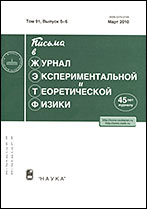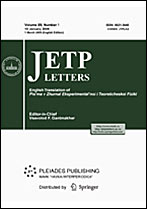|
This article is cited in 4 scientific papers (total in 4 papers)
FIELDS, PARTICLES, AND NUCLEI
New capabilities of an iodine detector for solar neutrinos
Yu. S. Lutostanskya, G. A. Koroteevb, N. V. Klochkovaa, A. P. Osipenkoa, V. N. Tikhonova, A. N. Fazliakhmetovbc
a National Research Center Kurchatov Institute, Moscow, 123182 Russia
b Moscow Institute of Physics and Technology (National Research University), Moscow, 117303 Russia
c Institute for Nuclear Research, Russian Academy of Sciences, Moscow, 117312 Russia
Abstract:
This study has indicated that the resonance structure of the charge-exchange strength function $S(E)$ strongly affects the cross section for solar neutrino capture $\sigma(E)$ by the $^{127}\mathrm{I}$ nucleus. The effect of each resonance on the energy dependence of $\sigma(E)$ for an iodine detector has been analyzed. It has been shown that all high-lying charge-exchange resonances should be taken into account in the calculations of the cross section $\sigma(E)$, and the highest energy resonances in the strength function $S(E)$ determine the formation of the stable $^{126}\mathrm{Xe}$ isotope at the capture of a high-energy solar neutrino by the $^{127}\mathrm{I}$ nucleus and the subsequent neutron emission from the formed $^{127}\mathrm{Xe}$ isotope. The calculations with the inclusion of the neutron separation energy $S_n$ in the $^{127}\mathrm{Xe}$ nucleus show that the inclusion of the neutron separation energy $S_n$ reduces the neutrino capture rate, particularly for boron and hep neutrinos, and the $^{126}\mathrm{Xe}/^{127}\mathrm{Xe}$ isotope ratio is an indicator of these hard neutrinos. It has been found that the formation of the $^{126}\mathrm{Xe}$ isotope is accompanied by the emission of gamma-ray photons with a certain energy. It has been shown that the analysis of the $^{126}\mathrm{Xe}/^{127}\mathrm{Xe}$ isotope ratio in the formed xenon gas mixture and the detection of gamma emission in $^{126}\mathrm{Xe}$ open new capabilities of the iodine detector for the detection of solar neutrinos and make it possible to separate the important boron component of the solar spectrum.
Received: 20.04.2020
Revised: 20.04.2020
Accepted: 23.04.2020
Citation:
Yu. S. Lutostansky, G. A. Koroteev, N. V. Klochkova, A. P. Osipenko, V. N. Tikhonov, A. N. Fazliakhmetov, “New capabilities of an iodine detector for solar neutrinos”, Pis'ma v Zh. Èksper. Teoret. Fiz., 111:11 (2020), 723–727; JETP Letters, 111:11 (2020), 603–607
Linking options:
https://www.mathnet.ru/eng/jetpl6180 https://www.mathnet.ru/eng/jetpl/v111/i11/p723
|


| Statistics & downloads: |
| Abstract page: | 138 | | Full-text PDF : | 22 | | References: | 28 | | First page: | 6 |
|





 Contact us:
Contact us: Terms of Use
Terms of Use
 Registration to the website
Registration to the website Logotypes
Logotypes







 Citation in format
Citation in format 
